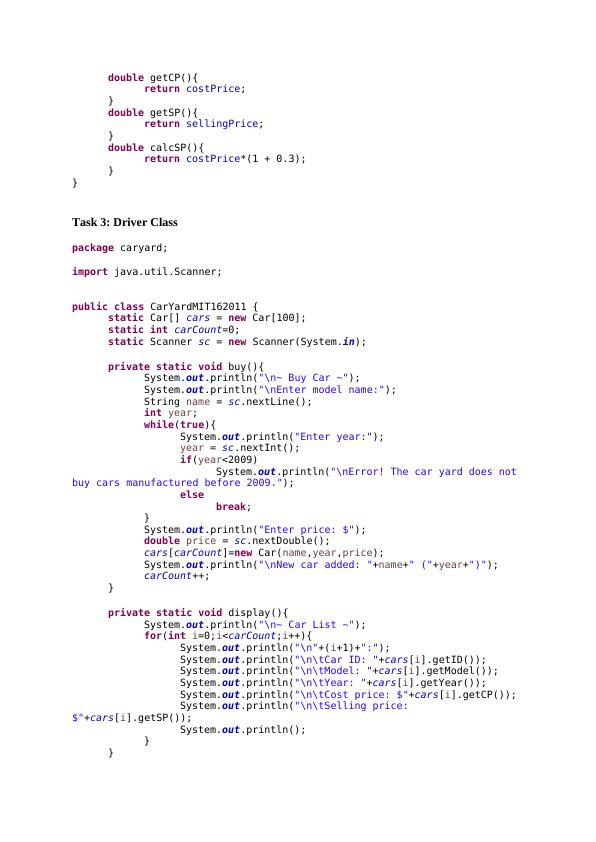CarYardMIT162011 Class Implementation in Java
This assignment assesses the basic concepts of programming; students should be able to demonstrate their achievements in the following unit learning outcomes: a. describe the fundamental principles of object-oriented programming; b. interpret a user’s needs while dealing with simple program specifications; c. design a simple class using UML notation; d. create a simple application based on UML design and the incremental development process of coding, debugging, and testing; e. apply basic control structures – sequence, repetition, and selection – to program development; f. produce simple interactive applications.
Added on 2023-06-11
About This Document
CarYardMIT162011 Class Implementation in Java
This assignment assesses the basic concepts of programming; students should be able to demonstrate their achievements in the following unit learning outcomes: a. describe the fundamental principles of object-oriented programming; b. interpret a user’s needs while dealing with simple program specifications; c. design a simple class using UML notation; d. create a simple application based on UML design and the incremental development process of coding, debugging, and testing; e. apply basic control structures – sequence, repetition, and selection – to program development; f. produce simple interactive applications.
Added on 2023-06-11
End of preview
Want to access all the pages? Upload your documents or become a member.



